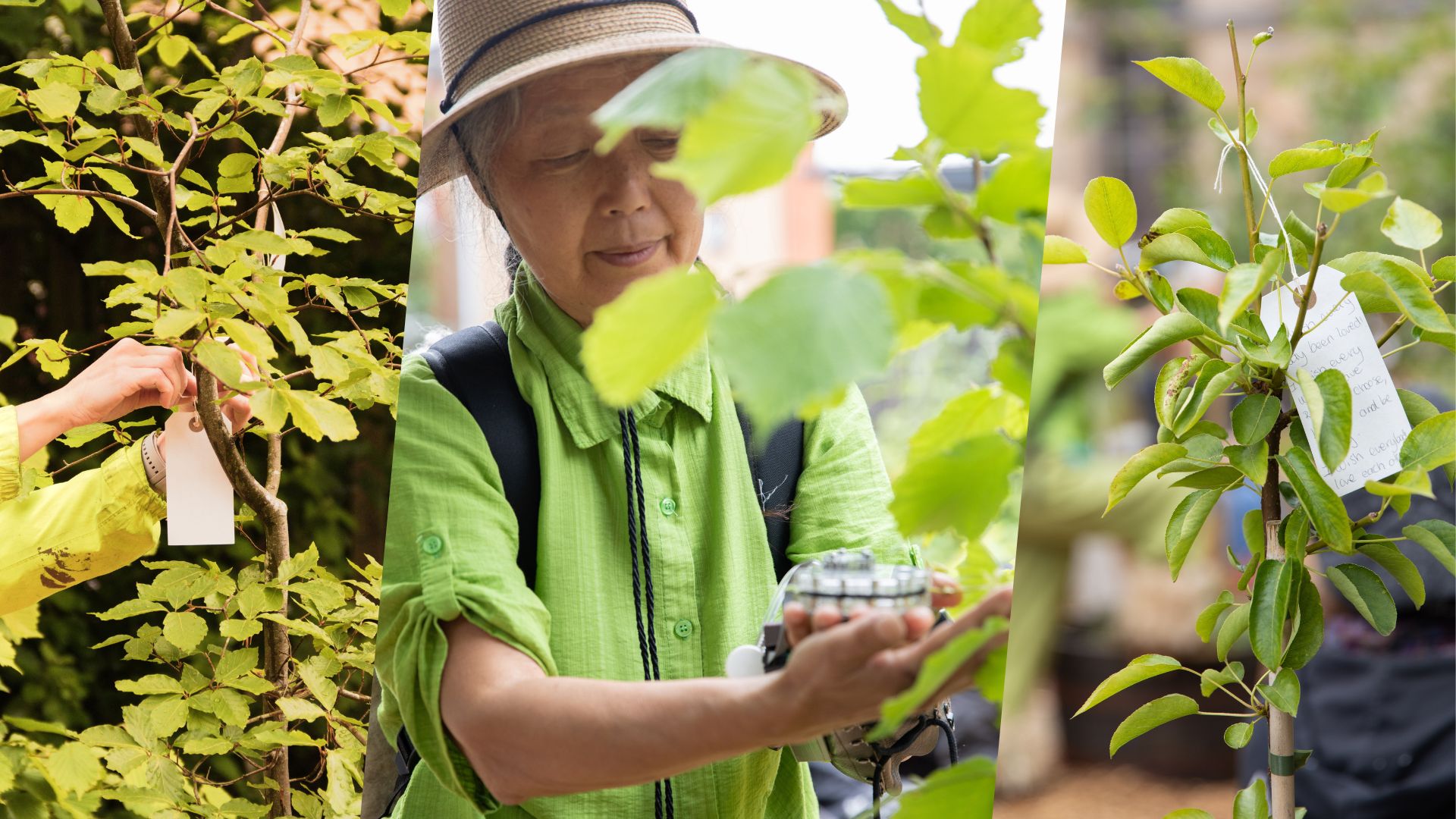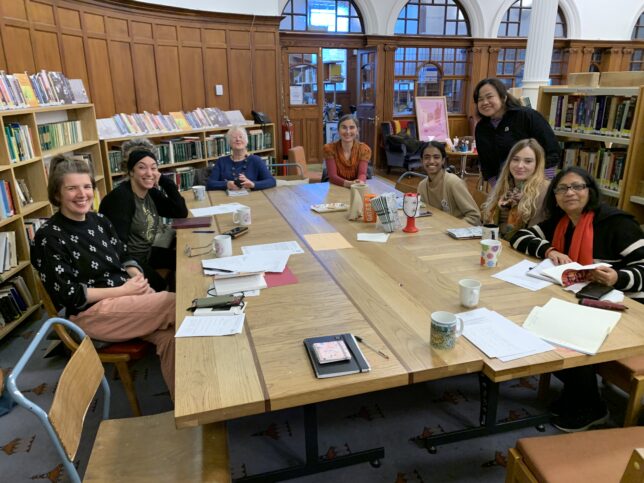Our volunteer and Green Cluster member Carolyn interviewed Annika, GWL’s Facilities Management Officer about the Library’s journey to operational net zero.
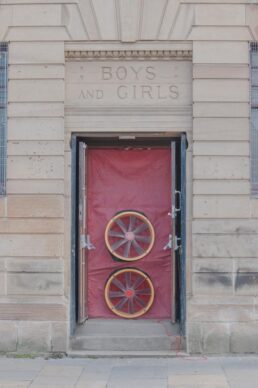
GWL’s Net-Zero Handbook was launched last year, and was a result of a process involving Library staff, volunteers and experts who helped us with this journey. What’s in the Handbook?
The Net-Zero Handbook is a practical plan for building improvements that will allow us reach operational net zero by 2030, compiled by Dress for the Weather Architects, John Gilbert Architects and Lúths Services. It showcases data from the building survey which included air tightness testing and thermographic survey, and is a great source of information for anyone who’s keen to learn more about net zero and what it will mean for the GWL building.
In simple terms, what are the first steps GWL are taking?
Thinking about all the work that needs to be done in order to reach net zero can be quite overwhelming, and the works themselves require a lot of funding. We decided to tackle this huge undertaking in three stages, which also makes it more manageable from a fundraising point of view. We have now managed to raise the funds we need to get started on the first phase.
“Fabric First” means ensuring that the entire building is as airtight and well insulated as possible before any renewable systems are installed, and this is what we’re getting started on. We’re working with Dress for the Weather Architects who produced our Net-Zero Handbook, and they’ve prepared detailed plans for the insulation works.
Some insulation works will be scheduled for the winter of 2024, and some for the spring/summer of 2025. We expect this first phase to be completed by September 2025.
The later phases will include improving our existing services (for example air conditioning and archive cooling systems), and finally installing renewable energy sources: an air source heat pump and solar panels.
Does this mean you’ll have to close the Library while the works happen?
No, we plan to remain open throughout. Some of our spaces will be closed for periods of time while the insulation is being installed, but the rest of the building will be open as usual for visitors. It’s important to us that we keep our services going throughout the project.
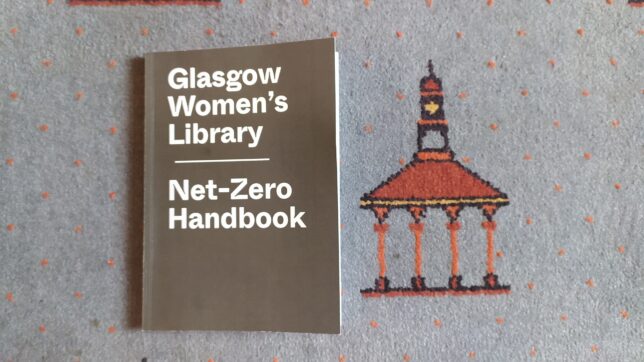
How much will this cost? And how is it being paid for?
So far, we’ve raised over £300,000 for the first phase of the project that will take place in 2024/2025. We’ve been awarded funding from SP Energy Networks’ Transmission Net Zero Fund, Museums Galleries Scotland’s Capital Resilience Fund, and the Wolfson Foundation for this phase of the project. Their generous support has been supplemented by individual supporters of GWL through our Women on the Wall fundraising initiative.
Can you say more about the Women on the Wall initiative?
It is similar to a past fundraising initiative Women on the Shelf, which let people sponsor a shelf or section in the new library and dedicate it to a woman of their choice. This time the names of nominated women will be stencilled onto a dedicated feature wall – we’re currently collecting nominations and it will be a tribute to remarkable women, past and present. All funds raised will go directly to the net zero project and future-proofing our building.
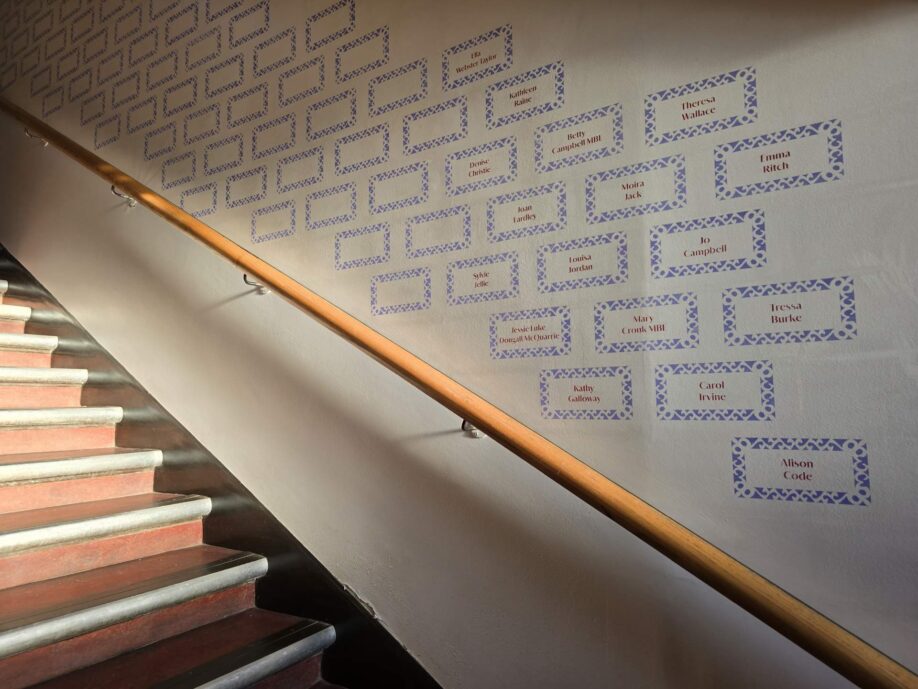
Designer Kirsty McBride created the stencil for the border surrounding each name, based on the building’s original cast-iron ventilation grates. More information about each woman’s work, life and impact will be available on our website.
So what exactly will be happening in the first phase?
We will be insulating the building, working in four different areas. Our building is Category B listed, which adds an extra layer of care that is needed when planning any alterations to the original fabric.
The loft above our Community Room is being insulated with mineral wool, a material commonly used to insulate all kinds of buildings. The same material will be used in the basement, beneath the ground floor.
The primary sandstone façade on Landressy Street is one of the main heritage features of the building. Because of its historic significance we cannot (and wouldn’t want to!) alter its appearance by adding any kind of external insulation. Instead, the plan is to install an internal cavity wall insulation system. This will entail creating small temporary holes so that polystyrene beads can be injected into the cavity between the original wood panelling and the external wall. The gaps between the beads will allow the building to ‘breathe’, while the system will significantly increase its thermal performance.
The three other sides of the building are a mix of different materials with later patch repairs/alterations (including brick and concrete render), as the library was originally flanked by the neighbouring buildings. These elevations will be insulated externally, and covered with a mineral render.
Will doing all this made a noticeable difference to the space?
We think so, yes. It will give us more control over the temperature inside the library, and reduce the amount of gas we need to use to keep the space warm. It should also help keep temperatures more steady and decrease the fluctuations from day to night.
Since the beginning of the year myself and one of our brilliant volunteers, Kirsty, have been monitoring temperatures around the building and collecting hourly readings. We’re also collecting data on our boiler usage and the temperature outside each day. This will give us insight into how the thermal performance of the building changes after the insulation, and provide valuable learning that we hope to share as the project moves forward.
The Net-Zero Handbook estimates that the first phase will reduce our carbon emissions by up to 30% as a result of using less heating, which will be a significant milestone in our journey to reaching operational net zero.
Thank you Annika for taking the time to explain all this to us! Can we come back to you for updates as this exciting project proceeds?
Of course! We’ll be sharing updates about the project through blog posts and our social media channels in the coming months too.

